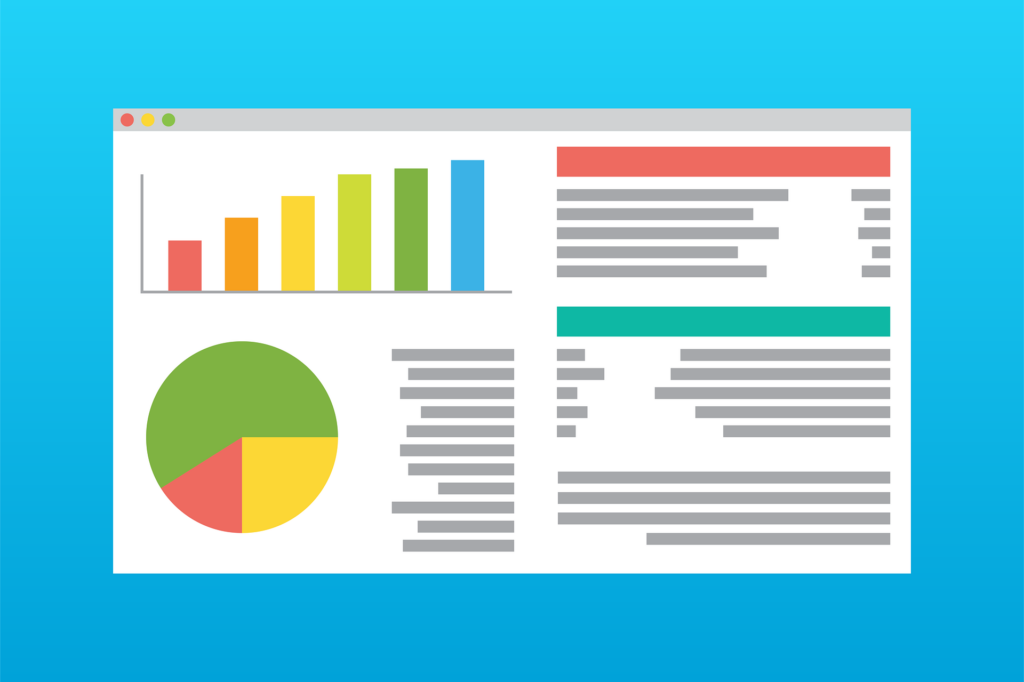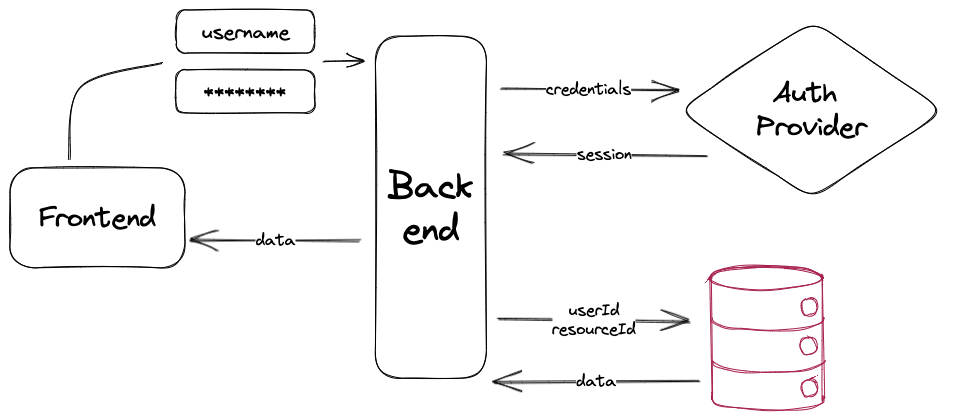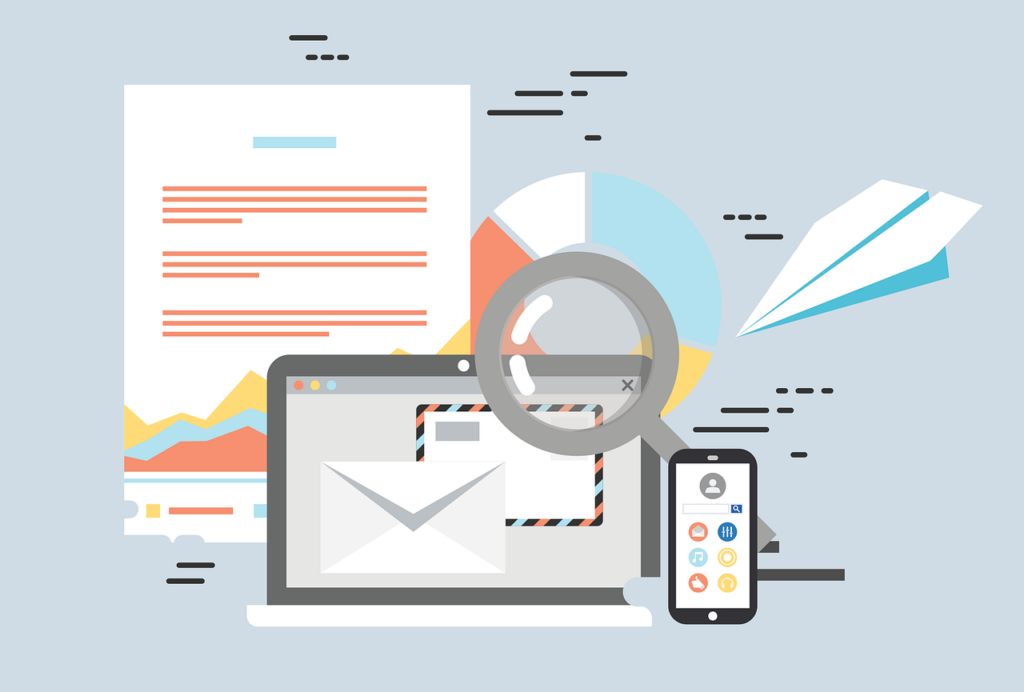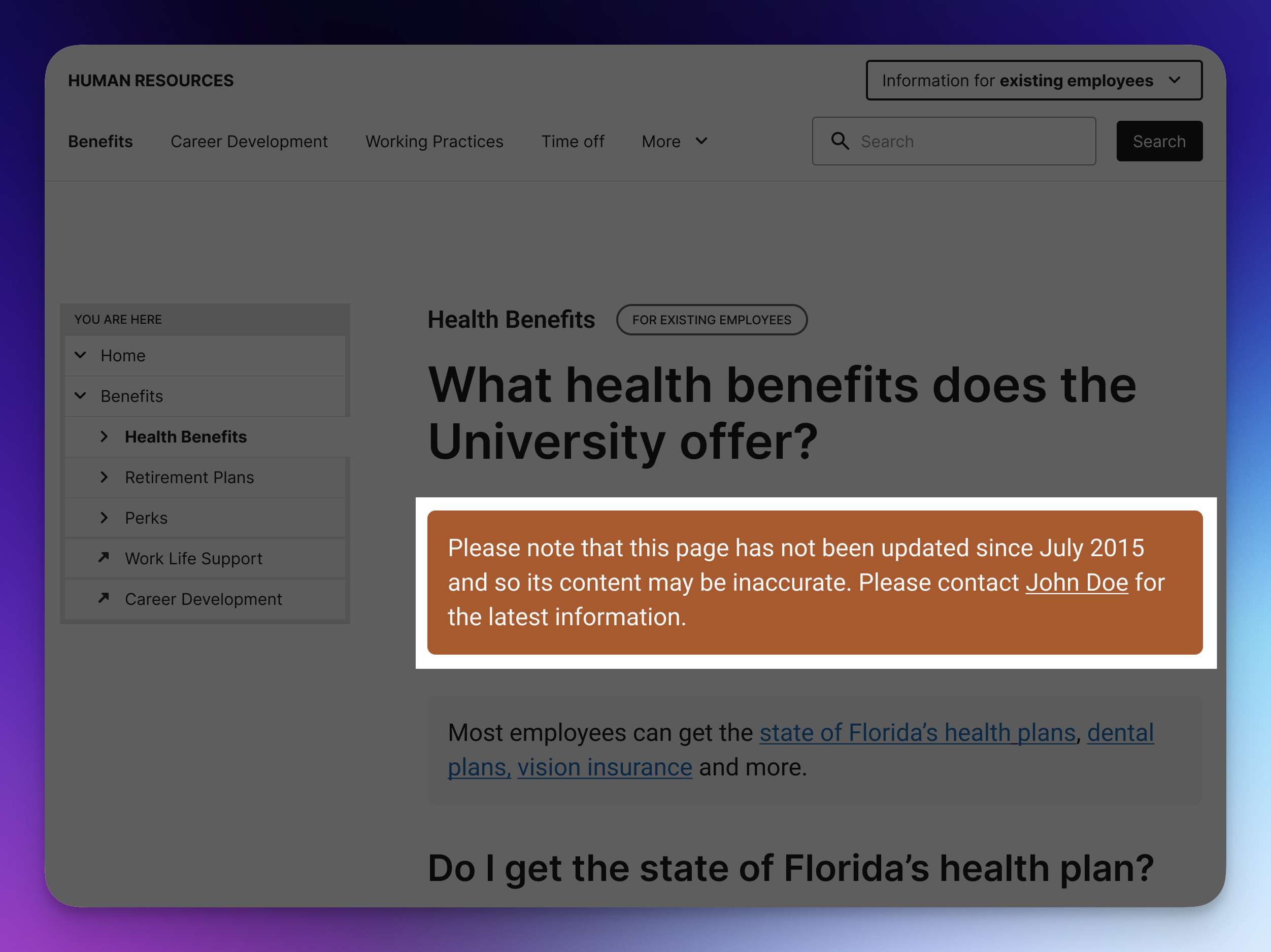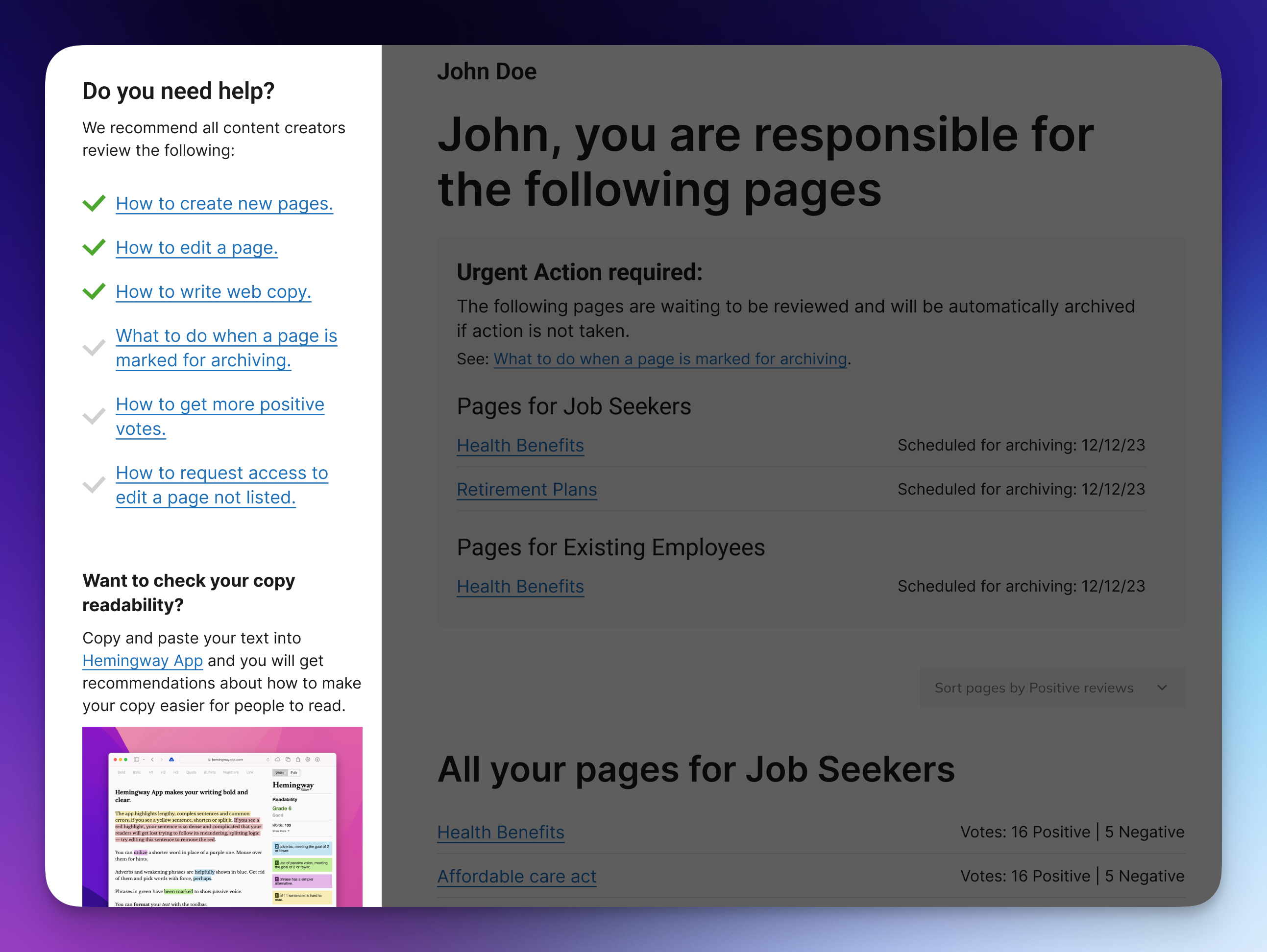Swing Into April (2023 Wallpapers Edition)
New month, new wallpapers! To cater for a fresh dose of colorful inspiration every month, we embarked on our monthly wallpapers journey over 12 years ago. It’s the perfect occasion for creatives to put their design skills to the test, indulge in a little project just for fun, or tell a story that matters to them. Of course, it wasn’t any different this time around.
In this post, you’ll find beautiful, unique, and inspiring wallpapers for April 2023 created with love by artists and designers from across the globe. All of them are available in versions with and without a calendar and can be downloaded for free. At the end of the post, we also compiled a little best-of from past April editions for you. Maybe you’ll rediscover one of your almost-forgotten favorites in there, too? A big thank you to everyone who shared their designs with us! Happy April!
- You can click on every image to see a larger preview,
- We respect and carefully consider the ideas and motivation behind each and every artist’s work. This is why we give all artists the full freedom to explore their creativity and express emotions and experience through their works. This is also why the themes of the wallpapers weren’t anyhow influenced by us but rather designed from scratch by the artists themselves.
-
Submit a wallpaper!
Did you know that you could get featured in our next wallpapers post, too? We are always looking for creative talent.
The Loneliest House In The World
“March 26 was Solitude Day. To celebrate it, here is the picture about the loneliest house in the world. It is a real house, I found it on Youtube.” — Designed by Vlad Gerasimov from Georgia.
- preview
- with calendar: 800×480, 800×600, 1024×600, 1024×768, 1152×864, 1280×720, 1280×800, 1280×960, 1280×1024, 1366×768, 1400×1050, 1440×900, 1440×960, 1600×900, 1600×1200, 1680×1050, 1680×1200, 1920×1080, 1920×1200, 1920×1440, 2560×1440, 2560×1600, 2880×1800, 3072×1920, 3840×2160, 5120×2880
- without calendar: 800×480, 800×600, 1024×600, 1024×768, 1152×864, 1280×720, 1280×800, 1280×960, 1280×1024, 1366×768, 1400×1050, 1440×900, 1440×960, 1600×900, 1600×1200, 1680×1050, 1680×1200, 1920×1080, 1920×1200, 1920×1440, 2560×1440, 2560×1600, 2880×1800, 3072×1920, 3840×2160, 5120×2880
April Showers
“April Showers bring hedgehogs under flowers!” — Designed by Danaé Drews from the United States.
- preview
- with calendar: 320×480, 640×480, 800×480, 800×600, 1024×768, 1024×1024, 1152×864, 1280×720, 1280×800, 1280×960, 1280×1024, 1440×900, 1600×1200, 1680×1050, 1680×1200, 1920×1080, 1920×1200, 1920×1440, 2560×1440
- without calendar: 320×480, 640×480, 800×480, 800×600, 1024×768, 1024×1024, 1152×864, 1280×720, 1280×800, 1280×960, 1280×1024, 1440×900, 1600×1200, 1680×1050, 1680×1200, 1920×1080, 1920×1200, 1920×1440, 2560×1440
Kitten Season
“Lover of cats and it is indeed the season!” — Designed by Shannon Corr from New York.
- preview
- with calendar: 1024×1024, 1152×864, 1280×960, 1280×1024, 1440×900, 1680×1050, 1920×1080, 1920×1440, 2560×1440
- without calendar: 1024×1024, 1152×864, 1280×960, 1280×1024, 1440×900, 1680×1050, 1920×1080, 1920×1440, 2560×1440
Puddle Splash
“I designed this playful and fun wallpaper inspired by nature that is present during the early spring.” — Designed by Marla Gambucci from the United States.
- preview
- with calendar: 320×480, 640×480, 800×480, 800×600, 1024×1024, 1152×864, 1280×720, 1280×800, 1280×960, 1280×1024, 1400×1050, 1440×900, 1600×1200, 1680×1050, 1680×1200, 1920×1080, 1920×1200, 1920×1440, 2560×1440
- without calendar: 320×480, 640×480, 800×480, 800×600, 1024×1024, 1152×864, 1280×720, 1280×800, 1280×960, 1280×1024, 1400×1050, 1440×900, 1600×1200, 1680×1050, 1680×1200, 1920×1080, 1920×1200, 1920×1440, 2560×1440
Le Printemps Est Rose
“Spring has arrived in Paris. We go to the Sacré-Cœur and enjoy the sunset or the sunrise. There it seems that time has stopped.” — Designed by Veronica Valenzuela Jimenez from Spain.
- preview
- with calendar: 640×480, 800×480, 1024×768, 1280×720, 1280×800, 1440×900, 1600×1200, 1920×1080, 1920×1440, 2560×1440
- without calendar: 640×480, 800×480, 1024×768, 1280×720, 1280×800, 1440×900, 1600×1200, 1920×1080, 1920×1440, 2560×1440
Fresh Kicks
“Spring time means the nicer weather is rolling in, so that means the nice shoes roll out as well.” — Designed by Alex Shields from the United States.
- preview
- with calendar: 320×480, 640×480, 800×480, 800×600, 1024×768, 1024×1024, 1152×864, 1280×720, 1280×800, 1280×960, 1400×1050, 1440×900, 1600×1200, 1680×1050, 1680×1200, 1920×1200, 1920×1440, 2560×1440
- without calendar: 320×480, 640×480, 800×480, 800×600, 1024×768, 1024×1024, 1152×864, 1280×720, 1280×800, 1280×960, 1400×1050, 1440×900, 1600×1200, 1680×1050, 1680×1200, 1920×1200, 1920×1440, 2560×1440
I “Love” My Dog
Designed by Ricardo Gimenes from Sweden.
- preview
- with calendar: 640×480, 800×480, 800×600, 1024×768, 1024×1024, 1152×864, 1280×720, 1280×800, 1280×960, 1280×1024, 1366×768, 1400×1050, 1440×900, 1600×1200, 1680×1050, 1680×1200, 1920×1080, 1920×1200, 1920×1440, 2560×1440, 3840×2160
- without calendar: 640×480, 800×480, 800×600, 1024×768, 1024×1024, 1152×864, 1280×720, 1280×800, 1280×960, 1280×1024, 1366×768, 1400×1050, 1440×900, 1600×1200, 1680×1050, 1680×1200, 1920×1080, 1920×1200, 1920×1440, 2560×1440, 3840×2160
To Be Or Not To Be?
“Capture the essence of Bard’s time with this William Shakespeare calendar for April. With intricate details and period-specific clothing and accessories, this calendar is a stunning work of art that transports you to the world of Elizabethan England.” — Designed by PopArt Studio from Serbia.
- preview
- with calendar: 320×480, 640×480, 800×480, 800×600, 1024×768, 1024×1024, 1152×864, 1280×720, 1280×800, 1280×960, 1280×1024, 1400×900, 1400×1050, 1680×1050, 1680×1200, 1920×1080, 1920×1200, 1920×1440, 2560×1440
- without calendar: 320×480, 640×480, 800×480, 800×600, 1024×768, 1024×1024, 1152×864, 1280×720, 1280×800, 1280×960, 1280×1024, 1400×900, 1400×1050, 1680×1050, 1680×1200, 1920×1080, 1920×1200, 1920×1440, 2560×1440
Free As A Bird
“In this beautiful weather, these kids are enjoying their moment freely, just like a bird in an endless sky.” — Designed by Kasturi Palmal from India.
- preview
- with calendar: 800×600, 1280×1024, 1600×1200, 1680×1200, 1920×1080, 1920×1200, 1920×1440, 2560×1440
- without calendar: 800×600, 1280×1024, 1600×1200, 1680×1200, 1920×1080, 1920×1200, 1920×1440, 2560×1440
First Day Of Spring
“April is my birthday month! Creating this wallpaper was a reminder of the new beginnings spring brings!” — Designed by Marykate Boyle from the United States.
- preview
- with calendar: 320×480, 640×480, 800×480, 800×600, 1024×768, 1024×1024, 1152×864, 1280×720, 1280×800, 1280×960, 1280×1024, 1400×1050, 1440×900, 1600×1200, 1680×1050, 1680×1200, 1920×1080, 1920×1200, 1920×1440, 2560×1440
- without calendar: 320×480, 640×480, 800×480, 800×600, 1024×768, 1024×1024, 1152×864, 1280×720, 1280×800, 1280×960, 1280×1024, 1400×1050, 1440×900, 1600×1200, 1680×1050, 1680×1200, 1920×1080, 1920×1200, 1920×1440, 2560×1440
Spring Doodles
Designed by Kristina Zenga from the United States.
- preview
- with calendar: 320×480, 640×480, 800×480, 800×600, 1024×768, 1024×1024, 1152×864, 1280×720, 1280×800, 1280×960, 1400×1050, 1440×900, 1600×1200, 1680×1050, 1680×1200, 1920×1080, 1920×1200, 1920×1440, 2560×1440
- without calendar: 320×480, 640×480, 800×480, 800×600, 1024×768, 1024×1024, 1152×864, 1280×720, 1280×800, 1280×960, 1400×1050, 1440×900, 1600×1200, 1680×1050, 1680×1200, 1920×1080, 1920×1200, 1920×1440, 2560×1440
An Eerie Village
“I designed the wallpaper to bring an eerie atmosphere, strange occurrences, and mysterious happenings. The houses and buildings may be dilapidated and abandoned, with overgrown vegetation and creaking doors. There might be strange symbols etched on the walls or the ground, and street light may be seen flickering in the darkness. The villagers along with the animals might appear suspicious and reclusive, adding to the overall feeling of unease. In an eerie village, it often feels like something is not quite right, and the sense of foreboding and danger can be palpable. Hope you like this wallpaper! :)” — Designed by Hrishikesh Shome from India.
- preview
- with calendar: 1600×1200, 1680×1050, 1680×1200, 1920×1080, 1920×1200, 1920×1440, 2560×1440, 3840×2160
- without calendar: 1600×1200, 1680×1050, 1680×1200, 1920×1080, 1920×1200, 1920×1440, 2560×1440, 3840×2160
Goose Picnic
“I love fashion and nature, so I wanted to combine those two ideas into the wallpaper. I wanted something bright and colorful.” — Designed by Jennifer Flynn from the United States, NJ.
- preview
- with calendar: 320×480, 640×480, 800×480, 800×600, 1024×768, 1024×1024, 1152×864, 1280×720, 1280×800, 1280×960, 1280×1024, 1400×1050, 1440×900, 1600×1200, 1680×1050, 1680×1200, 1920×1080, 1920×1200, 1920×1440, 2560×1440
- without calendar: 320×480, 640×480, 800×480, 800×600, 1024×768, 1024×1024, 1152×864, 1280×720, 1280×800, 1280×960, 1280×1024, 1400×1050, 1440×900, 1600×1200, 1680×1050, 1680×1200, 1920×1080, 1920×1200, 1920×1440, 2560×1440
Spring Moonlight
“The days are getting warmer, and so are the nights!” — Designed by Gabrielle Ziegler from the United States.
- preview
- with calendar: 320×480, 640×480, 800×480, 800×600, 1024×768, 1024×1024, 1152×864, 1280×720, 1280×800, 1280×960, 1280×1024, 1400×1050, 1440×900, 1600×1200, 1680×1050, 1680×1200, 1920×1080, 1920×1200, 1920×1440, 2560×1440
- without calendar: 320×480, 640×480, 800×480, 800×600, 1024×768, 1024×1024, 1152×864, 1280×720, 1280×800, 1280×960, 1280×1024, 1400×1050, 1440×900, 1600×1200, 1680×1050, 1680×1200, 1920×1080, 1920×1200, 1920×1440, 2560×1440
Granthagar
“The history of libraries began with the first efforts to organize collections of documents. Topics of interest include accessibility of the collection, acquisition of materials, arrangement and finding tools, the book trade, the influence of the physical properties of the different writing materials, language distribution, role in education, rates of literacy, budgets, staffing, libraries for targeted audiences, architectural merit, patterns of usage.” — Designed by Bhabna Basak from India.
- preview
- with calendar: 1440×900, 1600×1200, 1680×1050, 1680×1200, 1920×1080, 1920×1200, 1920×1440, 2560×1440
- without calendar: 1440×900, 1600×1200, 1680×1050, 1680×1200, 1920×1080, 1920×1200, 1920×1440, 2560×1440
Ice Scream
Designed by Ricardo Gimenes from Sweden.
- preview
- with calendar: 640×480, 800×480, 800×600, 1024×768, 1024×1024, 1152×864, 1280×720, 1280×800, 1280×960, 1280×1024, 1366×768, 1400×1050, 1440×900, 1600×1200, 1680×1050, 1680×1200, 1920×1080, 1920×1200, 1920×1440, 2560×1440, 3840×2160
- without calendar: 640×480, 800×480, 800×600, 1024×768, 1024×1024, 1152×864, 1280×720, 1280×800, 1280×960, 1280×1024, 1366×768, 1400×1050, 1440×900, 1600×1200, 1680×1050, 1680×1200, 1920×1080, 1920×1200, 1920×1440, 2560×1440, 3840×2160
Bright Intricacy
Designed by Nick Morrow from Pennsylvania.
- preview
- with calendar: 320×480, 640×480, 800×480, 800×600, 1024×768, 1024×1024, 1152×864, 1280×720, 1280×800, 1280×960, 1280×1024, 1400×1050, 1440×900, 1600×1200, 1680×1050, 1680×1200, 1920×1080, 1920×1200, 1920×1440, 2560×1440
- without calendar: 320×480, 640×480, 800×480, 800×600, 1024×768, 1024×1024, 1152×864, 1280×720, 1280×800, 1280×960, 1280×1024, 1400×1050, 1440×900, 1600×1200, 1680×1050, 1680×1200, 1920×1080, 1920×1200, 1920×1440, 2560×1440
Flower Shop
Designed by Allison McDermott from the United States.
- preview
- with calendar: 320×480, 640×480, 800×480, 800×600, 1024×768, 1024×1024, 1152×864, 1280×720, 1280×800, 1280×960, 1280×1024, 1440×900, 1440×1050, 1600×1200, 1680×1050, 1680×1200, 1920×1080, 1920×1200, 1920×1440, 2560×1440
- without calendar: 320×480, 640×480, 800×480, 800×600, 1024×768, 1024×1024, 1152×864, 1280×720, 1280×800, 1280×960, 1280×1024, 1440×900, 1440×1050, 1600×1200, 1680×1050, 1680×1200, 1920×1080, 1920×1200, 1920×1440, 2560×1440
The Slimeguy
“April brings with it a fun warmth, it reignites childlike wonder with the world around us. I wanted to capture that in the energy of this happy Slimeguy, as well as with my mostly yellow-toned colors. He leaps forth onto your screen with an abstract warmth and energy one can only find in the springtime.” — Designed by Jad Tindall from United States.
- preview
- with calendar: 1440×900, 1600×1200, 1680×1050, 1680×1200, 1920×1080, 1920×1200, 1920×1440, 2560×1440
- without calendar: 1440×900, 1600×1200, 1680×1050, 1680×1200, 1920×1080, 1920×1200, 1920×1440, 2560×1440
Spring Moon Moth
“Lunar moths, much like spring itself, represent new beginnings and fresh starts. In April, the nights are still crisp and cold, but you can finally start to see the stars.” — Designed by Anna Warkentin from the United States.
- preview
- with calendar: 320×480, 640×480, 800×480, 800×600, 1024×768, 1024×1024, 1152×864, 1280×720, 1280×800, 1280×960, 1280×1024, 1400×1050, 1600×1200, 1680×1050, 1680×1200, 1920×1080, 1920×1200, 1920×1440, 2560×1440
- without calendar: 320×480, 640×480, 800×480, 800×600, 1024×768, 1024×1024, 1152×864, 1280×720, 1280×800, 1280×960, 1280×1024, 1400×1050, 1600×1200, 1680×1050, 1680×1200, 1920×1080, 1920×1200, 1920×1440, 2560×1440
Long-Awaited Blooming April
“Long-awaited spring inspired our designers to create a set of wallpapers dedicated to its blooming and greenery. We have more April wallpapers in our selection.” — Designed by MasterBundles from Ukraine.
- preview
- with calendar: 320×480, 640×480, 800×480, 800×600, 1024×768, 1024×1024, 1152×864, 1280×720, 1280×800, 1280×960, 1280×1024, 1366×768, 1400×1050, 1440×900, 1600×1200, 1680×1050, 1680×1200, 1920×1080, 1920×1200, 1920×1440, 2560×1440
- without calendar: 320×480, 640×480, 800×480, 800×600, 1024×768, 1024×1024, 1152×864, 1280×720, 1280×800, 1280×960, 1280×1024, 1366×768, 1400×1050, 1440×900, 1600×1200, 1680×1050, 1680×1200, 1920×1080, 1920×1200, 1920×1440, 2560×1440
Oldies But Goodies
From wallpapers celebrating cherry blossom season to love messages to coffee, chocolate, and rainy days, below we compiled some April favorites from 12 years of wallpapers posts. Please note that these designs don’t come with a calendar.
Swing Into Spring
“Our April calendar needs not mark any special occasion — April itself is a reason to celebrate. It was a breeze creating this minimal, pastel-colored calendar design with a custom lettering font and plant pattern, for the ultimate spring feel.” — Designed by PopArt Studio from Serbia.
- preview
- 320×480, 640×480, 800×480, 800×600, 1024×768, 1024×1024, 1152×864, 1280×720, 1280×800, 1280×960, 1280×1024, 1400×1050, 1440×900, 1600×1200, 1680×1050, 1680×1200, 1920×1080, 1920×1200, 1920×1440, 2560×1440
Dreaming
“The moment when you just walk and your imagination fills up your mind with thoughts.” — Designed by Gal Shir from Israel.
- preview
- 340×480, 640×480, 800×480, 800×600, 1024×768, 1024×1024, 1152×864, 1280×720, 1280×800, 1280×960, 1280×1024, 1366×768, 1400×1050, 1440×900, 1600×1200, 1680×1050, 1680×1200, 1920×1080, 1920×1200, 1920×1440, 2560×1440
Coffee Morning
Designed by Ricardo Gimenes from Sweden.
- preview
- 640×480, 800×480, 800×600, 1024×768, 1024×1024, 1152×864, 1280×720, 1280×800, 1280×960, 1280×1024, 1366×768, 1400×1050, 1440×900, 1600×1200, 1680×1050, 1680×1200, 1920×1080, 1920×1200, 1920×1440, 2560×1440, 3840×2160
Clover Field
Designed by Nathalie Ouederni from France.
Ready For April
“It is very common that it rains in April. This year, I am not sure… But whatever… we are just prepared!” — Designed by Verónica Valenzuela from Spain.
Happy Easter
Designed by Tazi Design from Australia.
- preview
- 320×480, 640×480, 800×600, 1024×768, 1152×864, 1280×720, 1280×960, 1600×1200, 1920×1080, 1920×1440, 2560×1440
Sakura
“Spring is finally here with its sweet Sakura’s flowers, which remind me of my trip to Japan.” Designed by Laurence Vagner from France.
Rainy Day
Designed by Xenia Latii from Berlin, Germany.
- preview
- 320×480, 640×480, 800×480, 800×600, 1024×768, 1152×864, 1280×720, 1280×800, 1280×960, 1280×1024, 1366×768, 1400×1050, 1440×900, 1600×1200, 1680×1050, 1680×1200, 1920×1080, 1920×1200, 1920×1440, 2560×1440
The Perpetual Circle
“Inspired by the Black Forest, which is beginning right behind our office windows, so we can watch the perpetual circle of nature, when we take a look outside.” — Designed by Nils Kunath from Germany.
- preview
- 320×480, 640×480, 1024×768, 1152×864, 1280×720, 1280×800, 1280×960, 1280×1024, 1400×1050, 1440×900, 1600×1200, 1680×1200, 1920×1080, 1920×1200, 1920×1440, 2560×1440
Inspiring Blossom
“‘Sweet spring is your time is my time is our time for springtime is lovetime and viva sweet love’, wrote E. E. Cummings. And we have a question for you. Is there anything more refreshing, reviving, and recharging than nature in blossom? Let it inspire us all to rise up, hold our heads high, and show the world what we are made of.” — Designed by PopArt Studio from Serbia.
- preview
- 320×480, 640×480, 800×480, 800×600, 1024×768, 1024×1024, 1152×864, 1280×720, 1280×800, 1280×960, 1280×1024, 1366×768, 1400×1050, 1440×900, 1600×1200, 1680×1050, 1680×1200, 1920×1080, 1920×1200, 1920×1440, 2560×1440
An Era Of Metals With Sense Of Touch
“In the future we can expect that machines will have emotions and they will start loving nature and flowers.” — Designed by Themesvillage from London.
- preview
- 320×480, 640×480, 800×480, 800×600, 1024×768, 1024×1024, 1152×864, 1280×720, 1280×800, 1280×960, 1280×1024, 1366×768, 1440×900, 1440×1050, 1600×1200, 1680×1050, 1680×1200, 1920×1080, 1920×1200, 1920×1440, 2560×1440
A Time For Reflection
“‘We’re all equal before a wave.’ (Laird Hamilton)” — Designed by Shawna Armstrong from the United States.
Spring Fever
“I created that mouse character for a series of illustrations about a poem my mom often told me when I was a child. In that poem the mouse goes on an adventure. Here it is after the adventure, ready for new ones.” — Designed by Anja Sturm from Germany.
Yellow Submarine
“The Beatles — ‘Yellow Submarine’: This song is fun and at the same time there is a lot of interesting text that changes your thinking. Like everything that makes The Beatles.” — Designed by WebToffee from India.
- preview
- 360×640, 1024×768, 1280×720, 1280×800, 1280×960, 1280×1024, 1366×768, 1400×1050, 1440×900, 1600×900, 1680×1200, 1920×1080
In The River
“Spring is here! Crocodiles search the hot and stay in the river.” — Designed by Veronica Valenzuela from Spain.
- preview
- 640×480, 800×480, 1024×768, 1280×720, 1280×800, 1440×900, 1600×1200, 1920×1080, 1920×1440, 2560×1440
Ipoh Hor Fun
“Missing my hometown’s delicious ‘Kai See Hor Fun’ (in Cantonese), that literally translates to ‘Shredded Chicken Flat Rice Noodles’. It is served in a clear chicken and prawn soup with chicken shreds, prawns, spring onions and noodles.” — Designed by Lew Su Ann from Brunei.
- preview
- 640×480, 800×600, 1024×768, 1152×864, 1280×720, 1280×800, 1280×960, 1366×768, 1400×1050, 1440×900, 1600×1200, 1680×1050, 1920×1080, 1920×1200, 1920×1440
Sweet April Showers Do Bring May Flowers
“Discover the seasonal fruits and vegetables in April: artichoke and beans walking in the rain!” — Designed by Vitaminas Design from Spain.
Citrus Passion
Designed by Nathalie Ouederni from France.
Wildest Dreams
“We love the art direction, story and overall cinematography of the ‘Wildest Dreams’ music video by Taylor Swift. It inspired us to create this illustration. Hope it will look good on your desktops.” — Designed by Kasra Design from Malaysia.
- preview
- 320×480, 640×480, 800×480, 800×600, 1024×768, 1024×1024, 1152×864, 1280×720, 1280×800, 1280×960, 1280×1024, 1366×768, 1400×1050, 1440×900, 1600×1200, 1680×1050, 1680×1200, 1920×1080, 1920×1200, 1920×1440, 2560×1440
Relax!
“…and enjoy your Easter holidays with some good chocolate.” — Designed by Ricardo Gimenes from Sweden.
- preview
- 320×480, 640×960, 1024×768, 1024×1024, 1280×800, 1280×960, 1280×1024, 1366×768, 1400×1050, 1440×900, 1600×1050, 1600×1200, 1680×1050, 1680×1200, 1920×1080, 1920×1200, 1920×1440, 2560×1440, 2880×1800
Springtime Sage
“Spring and fresh herbs always feel like they compliment each other. Keeping it light and fresh with this wallpaper welcomes a new season!” — Designed by Susan Chiang from the United States.









































